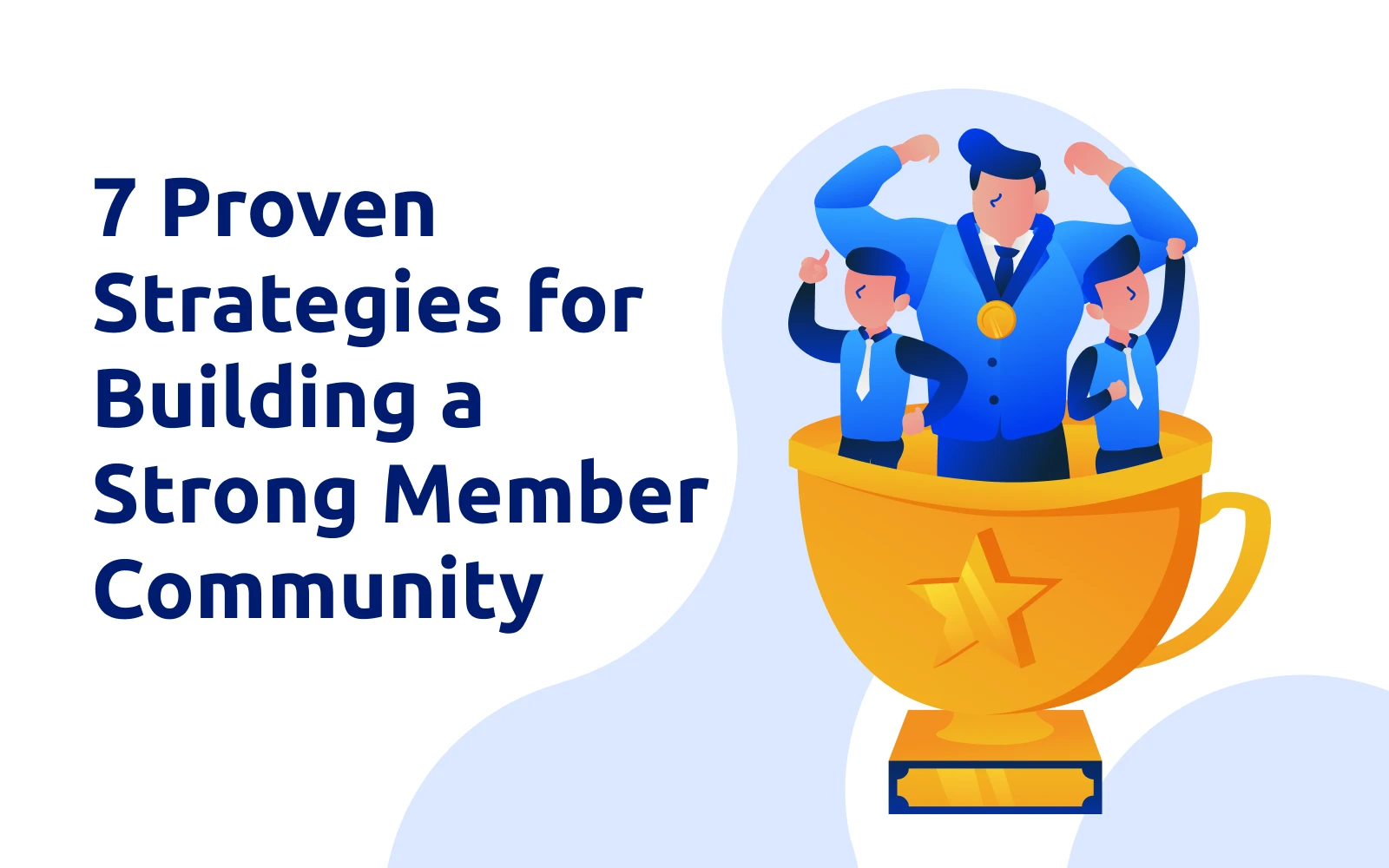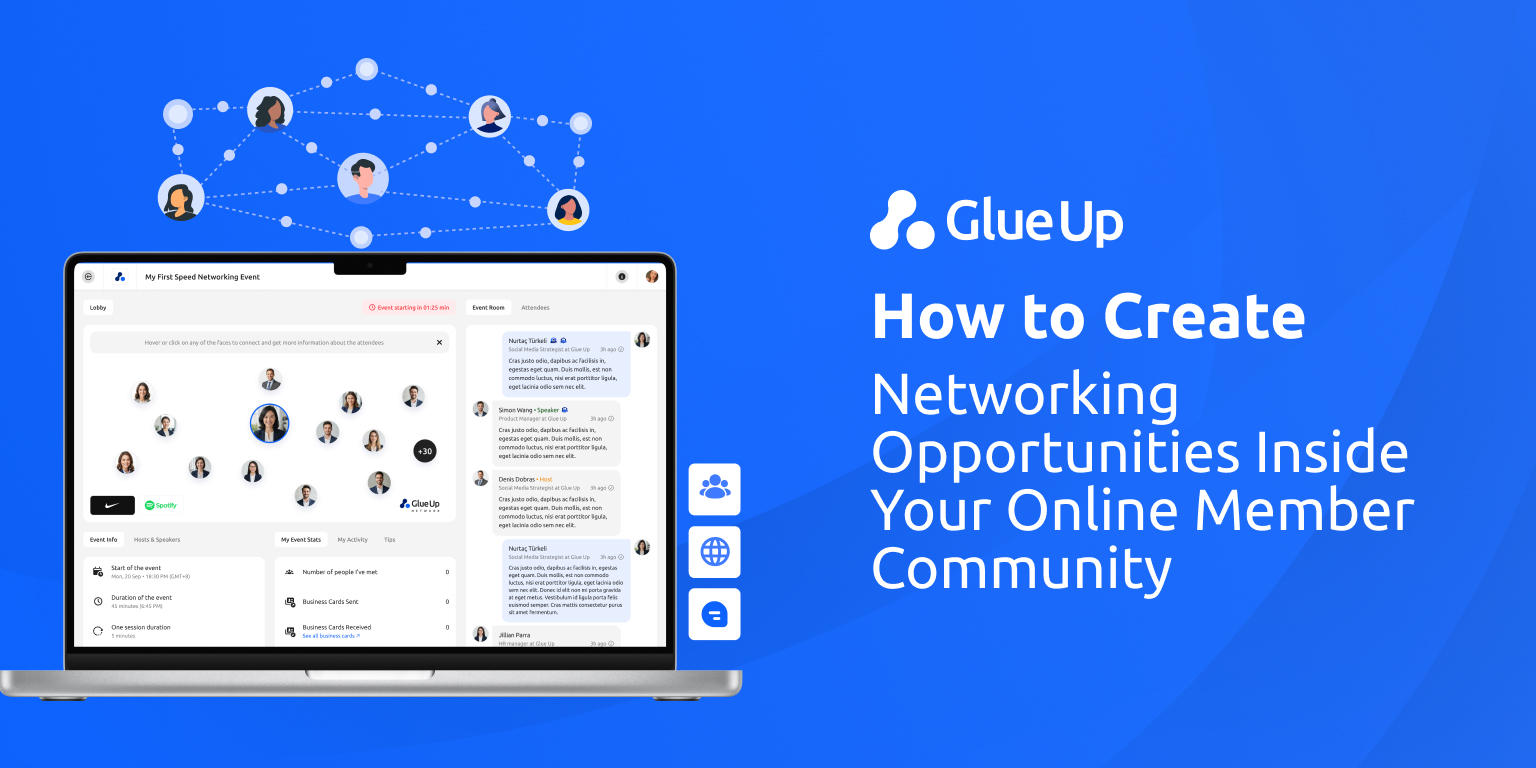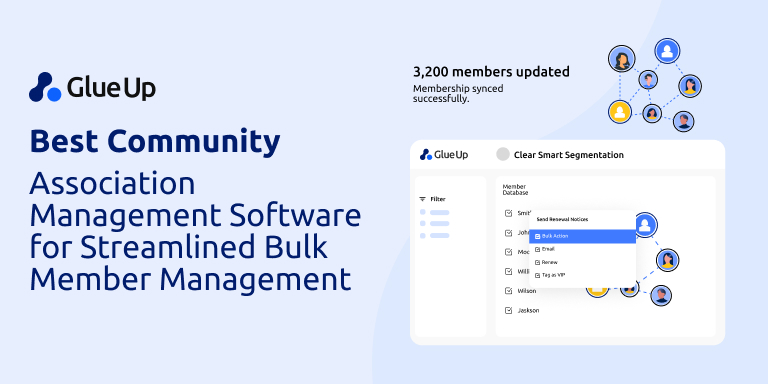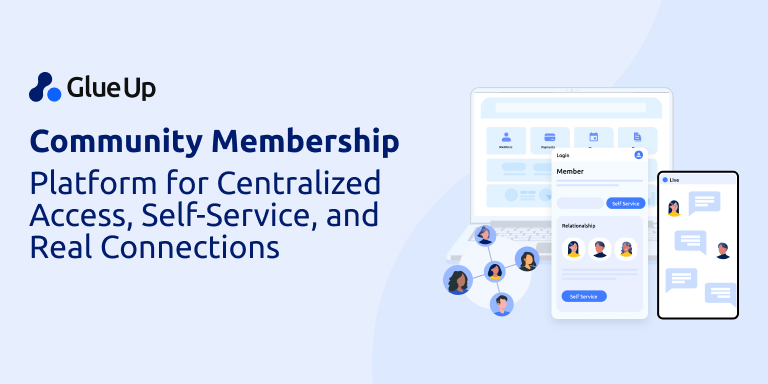
Strong member communities are the lifeblood of member-based organizations. They not only create a sense of belonging and identity among members but also lead to increased loyalty and engagement. However, establishing a robust member community is easier said than done; it takes a lot of effort and dedication.
In this article, we will explore 7 proven strategies for building a strong member community.
Whether you are just starting out or looking to enhance your current community, these strategies will provide you with the tools and insights needed to build a thriving member community that will help your association grow and succeed.
So let's dive in and start building!
Quick Reads
The Importance of a Robust Member Community
Member organizations aim to create a community with members sharing similar goals, values, and interests for social connection. Furthermore, they are committed to offering support and assistance to the fullest extent.
A strong member community benefits not only members but also the organization. Among these advantages are:
Increased Engagement and Participation
This approach helps increase participation levels and boost member engagement, allowing your organization to serve its purpose.
Your members are more likely to contribute their ideas, skills, and expertise when they feel involved and valued which also leads to creative solutions and improved outcomes.
Networking and Collaboration Opportunities

Solid members of a robust community can connect and collaborate, creating ideas, opportunities, and partnerships that help your organization achieve its goals.
Providing networking and collaboration opportunities can also help members expand their professional networks, develop new skills, and learn from one another.
Valuable Feedback and Insights
Members are the best source of feedback and ideas for improvement.
By soliciting and acting on member feedback, you can create a culture of continuous improvement and demonstrate your organization's commitment to providing member value.
Sense of Belonging and Connection
Members who feel connected to your organization are more likely to be loyal and continue their membership in the long run.
You can foster a strong sense of community and belongingness by creating opportunities for your members to connect and engage with one another. This approach will also help your organization achieve its goals and create a positive reputation in the community.
How To Build A Strong Member Community?
Building a solid member community is imperative for any organization looking to thrive in the long run. As mentioned above, it helps provide support, create a sense of belonging, and foster loyalty.
Therefore, building a strong community is the key to long-term success and gaining a competitive advantage.
There are several ways to encourage member participation, from hosting webinars and workshops to volunteering and networking events.
The goal is to offer diverse opportunities catering to your members' needs and interests. By doing so, your organization can build a supportive and engaged membership that contributes to your organization's overall success.
So whether you're starting a new organization or looking to strengthen your existing community, follow our community-building strategies below.
1. Define your Community Identity
A community usually consists of people from all walks of life. They often have different demographics and backgrounds. However, an organization brings them together for a common purpose or interest. So, when building a strong member community, start with creating a community identity.
A community identity is a collective understanding of its members and what they stand for. This identity should mirror the community’s goals, values, and philosophies.
Define your community identity and incorporate this in your organization’s name, logo, messaging, and activities. A well-defined identity is the first step to establishing a robust member community.
The continuing care retirement community (CCRC) is a perfect example of a member-based organization with a well-defined identity. It’s clear to see this community comprises seniors needing nursing care and assisted living after retirement and onwards.
This life plan is a viable option for older people looking to spend the last years of their lives comfortably and gracefully.
2. Set a Clear Vision and Mission

Having no vision and mission defeats the purpose of creating an organization in the first place.
Even groups for leisure and recreational activities have a sense of purpose. Your vision focuses on what your organization aims to achieve in the future; your mission prioritizes what it does in the present. Both are essential to building a solid member community.
That being said, create clear and concise vision and mission statements. That should guide your organization’s overall purpose and sense of direction.
While at it, set SMART metrics to track your community engagement and measure your organizational goals. These key metrics should be:
- Specific: Set specific goals and metrics around your organization’s vision and mission.
- Measurable: Make sure you can track and measure these set metrics and objectives.
- Achievable: You must be realistic with what you aim to achieve for your community-based organization.
- Relevant: These goals and metrics should align with your organization’s vision and mission.
- Time-bound: It helps to set a timeframe for what you want to attain for your organization.
3. Establish Trustworthy Leadership
An organization values its most important stakeholders — its members. However, it won’t exist without its leaders.
While the founders set the organization’s solid foundation, its existing leaders pave the way for its long-term success. So, to build a robust member community, your organization should have strong leadership.
First off, leaders should have a clear understanding of the organization's goals as well as vision and mission. They should also lead by example, demonstrating the values, behaviors, and culture the organization upholds.
Lastly — and most importantly, they should always be accessible and responsive to the members’ needs and concerns.
Mark Pierce, the CEO of Cloud Peak Law Group, underscored the importance of trustworthy leadership.
“Fostering a culture of trust begins with a leader who embodies it through words and actions. He inspires loyalty and confidence by making followers feel valued and empowered. Trustworthy leadership becomes the foundation upon which members thrive, and the community grows.”
4. Get Everyone Involved
This is the most crucial step. Getting everyone involved carves a sense of belongingness among your community members.
Encouraging members to participate in community activities and initiatives makes them feel valued and connected to the community. That leads to a solid member community.
To get everyone involved, open lines of communication and encourage members to share their opinions, suggestions, and feedback. Also, conduct activities and events to encourage member participation and constant engagement.
Lastly, promote a culture of appreciation and recognition by recognizing the members' contributions and celebrating their success.
John Gardner, the Co-Founder, and CEO of Kickoff, see member engagement as a challenge. However, he recommends setting effective strategies to get everyone involved.
“Ensuring active participation requires more than just asking for member involvement. It demands inspiring each member to believe in their potential and empowering them to become the change they wish to see.”
5. Ensure Clear Communication and Constant Collaboration
Effective communication is almost always the key to a successful organization.
By creating open lines of communication and promoting constant collaboration, your members can work together towards shared goals and avoid misunderstandings and conflicts. This approach lays the foundation of a thriving community of members who support and empower one another.
Let’s take the case study on the DNPs of color as an example. This non-profit nursing organization partnered with GlueUp to build networks, provide mentorship, and promote advocacy. Through streamlined communication and events, they fostered community-led growth.
By prioritizing effective communication and promoting collaboration, you can empower your members to thrive and contribute to your shared goals.
Whether it’s through digital platforms like GlueUp or face-to-face meetings, creating an environment of open communication helps members feel heard and valued. Ultimately, this builds a robust and supportive community.
6. Conduct Regular Activities and Events

Regular events and activities ensure constant member engagement and the fulfillment of your organizational goals. They help bring the community together and encourage members to participate actively.
Of course, every organization holds different events and activities. However, it should cater to its members' diverse needs and interests. Below are some examples of events and activities for your organization.
Webinars and workshops
Host educational events with industry-specific topics can. Doing so will help your members develop their skills and keep up with industry trends.
Volunteer activities
Consider organizing volunteer activities for social causes. These activities allow members to contribute to the community meaningfully and find fulfillment in what they have accomplished.
Networking events
Hold networking events such as happy hours, coffee meetups, and panel discussions. The goal is to help members connect with one another and establish good relationships.
Fitness and wellness activities
Conduct fitness classes, meditation sessions, and other wellness activities. They help promote your members’ physical health and mental well-being.
Social events
Organize social events such as picnics, barbecues, and holiday parties. Doing so allows members to connect on a more personal level.
All in all, offering diverse events and activities for your members will maximize member engagement in your organization.
Provide opportunities for your members to connect, learn, and contribute to their community. This way, you can create a thriving and engaged membership that supports your organization's growth and success.
7. Go Digital
'Going digital’ is the name of the game!
Jeremy Clifford, CEO of RouterCtrl, emphasizes harnessing the power of technology.
“In today’s digital landscape, we can no longer ignore the use of tools and applications. Digital platforms allow us to connect, despite the geographical distance, making the world a global village—so interconnected digitally.”
With the rise of various online platforms like social media, building an online community has become more accessible, seamless, and effective. With this in place, you can reach out to more people and build relationships with them.
However, one of the main shortcomings of conventional social media is the perceived security risk.
Privacy concerns have spiked among social media users in recent years. In the wake of recent data breaches, many users are reexamining their relationship with social media and their personal information security.

To provide a secure sense of community, industry leaders like Glue Up have developed an exclusive online community platform for your members.
Glue Up community management software is a private digital space where your members can express themselves and connect without fear of their data being leaked or sold. Only users with log-ins can see information and participate in conversations.
Unlike other social media sites, they can securely upload and share documents; create and share their digital business cards; and find like-minded people through the member directory.
All these features offer the most authentic community experience and ensure your community grows naturally.
Creating a thriving community with solid members is critical for every membership organization looking to succeed in today’s world. As such, consider the seven community-building strategies discussed above.
Start with building a community identity, not to mention setting a clear vision and mission. But while someone takes the lead, everyone should get involved. Remember to prioritize communication, foster engagement, and most importantly - leverage digital platforms to keep your community connected.
If you are interested in exploring how Glue Up can help you build a thriving community of members through digitization, get a demo today and start growing.
Author's Bio
Rachel Melegrito left her career as a university instructor to become a full-fledged content writer. She is also a licensed occupational therapist and a budding SEO strategist.



